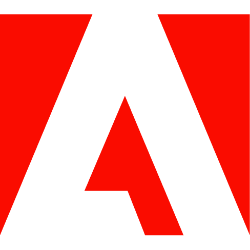BB

BlackBerry Limited
BB
(1.0)3,98 USD
-22.91% ROA
-10.04% ROE
-10.05x PER
1.382.303.520,00 USD
34.15% DER
0% Yield
-9.36% NPM
BlackBerry Limited Stock Analysis
BlackBerry Limited Fundamental Analysis
Fundamental analysis in stock investing is like studying the foundation of a house before buying it. It involves looking at a company's financial health, like its earnings, assets, and debts, to determine if it's a good investment based on its fundamental strength and potential for growth.
| # | Analysis | Rating |
|---|---|---|
| 1 |
PBV
The stock's PBV ratio (2.6x) reflects a fair valuation, making it an attractive option for investors seeking balanced opportunities. |
|
| 2 |
DER
The stock maintains a fair debt to equity ratio (52%), indicating a reasonable balance between the money it owes and the ownership it possesses. |
|
| 3 |
Graham Number
Based on the Graham number, this company's stock price appears to be lower than its intrinsic value, signaling a potentially favorable investment choice. |
|
| 4 |
Buffet Intrinsic Value
Warren Buffett's formula suggests that the company's stock is undervalued (78), making it an appealing investment prospect with its intrinsic value surpassing the current market price. |
|
| 5 |
ROE
Negative ROE (-56.23%) indicates poor financial performance, raising concerns about profitability and efficiency in utilizing shareholders' equity. |
|
| 6 |
ROA
The stock's ROA (-65.39%) suggests that it's struggling to generate profits from its assets, making it a risky choice for investment. |
|
| 7 |
Revenue Growth
Regrettably, this company's revenue has shown no signs of growth over the past three years, suggesting limited potential for returns and making it a less appealing choice. |
|
| 8 |
Net Profit Growth
Throughout the last five years, this company's net profit has remained unchanged, indicating a lack of growth and making it a less favorable investment option. |
|
| 9 |
Assets Growth
Company has experienced no growth in revenue over the past three years, suggesting limited profitability and making it a less desirable investment opportunity. |
|
| 10 |
Dividend Growth
The company's dividend growth has been flat for the past three years, raising concerns for potential investors seeking reliable returns. |
|
| 11 |
Dividend
The company's decision to withhold dividends for three years raises questions about its ability to generate consistent returns. |
BlackBerry Limited Technical Analysis
Technical analysis in stock investing is like reading the patterns on a weather map to predict future weather conditions. It involves studying past stock price movements and trading volumes to make predictions about where a stock's price might go next, without necessarily looking at the company's financial health.
| # | Analysis | Recommendation |
|---|---|---|
| 1 | Awesome Oscillator | Hold |
| 2 | MACD | Buy |
| 3 | RSI | Sell |
| 4 | Stoch RSI | Sell |
BlackBerry Limited Price Chart
Financial Statements
Financial statements are like report cards for companies. They show how much money a company makes (income statement), what it owns and owes (balance sheet), and where it spends its money (cash flow statement), helping stock investors understand if a company is healthy and worth investing in.
Income Statements
An income statement for a company is like a scoreboard for its profits and losses. It shows how much money the company made (revenue) and how much it spent to make that money (expenses), helping stock investors see if a company is making a profit or not.
Revenue in stock investing is the total amount of money a company earns from its sales, and it's a key factor that investors consider to assess a company's financial performance and growth potential.
| Year | Revenue | Growth |
|---|---|---|
| 1997 | 7.160.602 | |
| 1998 | 23.348.226 | 69.33% |
| 1999 | 46.750.083 | 50.06% |
| 2000 | 84.967.000 | 44.98% |
| 2001 | 221.327.000 | 61.61% |
| 2002 | 293.982.788 | 24.71% |
| 2003 | 307.005.274 | 4.24% |
| 2004 | 594.616.000 | 48.37% |
| 2005 | 1.350.447.000 | 55.97% |
| 2006 | 2.062.443.299 | 34.52% |
| 2007 | 3.036.648.945 | 32.08% |
| 2008 | 6.028.325.691 | 49.63% |
| 2009 | 11.065.186.000 | 45.52% |
| 2010 | 14.953.224.000 | 26% |
| 2011 | 19.907.000.000 | 24.88% |
| 2012 | 18.435.000.000 | -7.98% |
| 2013 | 11.073.000.000 | -66.49% |
| 2014 | 6.813.000.000 | -62.53% |
| 2015 | 3.335.000.000 | -104.29% |
| 2016 | 2.160.000.000 | -54.4% |
| 2017 | 1.309.000.000 | -65.01% |
| 2018 | 932.000.000 | -40.45% |
| 2019 | 904.000.000 | -3.1% |
| 2020 | 1.040.000.000 | 13.08% |
| 2021 | 893.000.000 | -16.46% |
| 2022 | 718.000.000 | -24.37% |
| 2023 | 656.000.000 | -9.45% |
| 2024 | 700.000.000 | 6.29% |
| 2024 | 853.000.000 | 17.94% |
| 2025 | 580.000.000 | -47.07% |
Research and Development Expenses are the costs a company incurs to create and improve its products or services, which can be important for investors to evaluate a company's innovation and potential for future growth.
| Year | Research and Development Expenses | Growth |
|---|---|---|
| 1997 | 3.288.031 | |
| 1998 | 4.589.822 | 28.36% |
| 1999 | 4.304.611 | -6.63% |
| 2000 | 7.738.000 | 44.37% |
| 2001 | 18.281.000 | 57.67% |
| 2002 | 37.437.058 | 51.17% |
| 2003 | 55.965.817 | 33.11% |
| 2004 | 62.638.000 | 10.65% |
| 2005 | 101.180.000 | 38.09% |
| 2006 | 157.369.441 | 35.71% |
| 2007 | 236.137.691 | 33.36% |
| 2008 | 360.961.524 | 34.58% |
| 2009 | 684.702.000 | 47.28% |
| 2010 | 964.841.000 | 29.03% |
| 2011 | 1.351.000.000 | 28.58% |
| 2012 | 1.559.000.000 | 13.34% |
| 2013 | 1.509.000.000 | -3.31% |
| 2014 | 1.286.000.000 | -17.34% |
| 2015 | 711.000.000 | -80.87% |
| 2016 | 469.000.000 | -51.6% |
| 2017 | 306.000.000 | -53.27% |
| 2018 | 239.000.000 | -28.03% |
| 2019 | 219.000.000 | -9.13% |
| 2020 | 259.000.000 | 15.44% |
| 2021 | 215.000.000 | -20.47% |
| 2022 | 219.000.000 | 1.83% |
| 2023 | 207.000.000 | -5.8% |
| 2024 | 168.000.000 | -23.21% |
| 2024 | 186.000.000 | 9.68% |
| 2025 | 148.000.000 | -25.68% |
General and Administrative Expenses are the costs a company incurs to run its day-to-day operations, such as office rent, salaries, and utilities, which investors consider to understand a company's overall efficiency and management effectiveness.
| Year | General and Administrative Expenses | Growth |
|---|---|---|
| 1997 | 0 | |
| 1998 | 0 | 0% |
| 1999 | 0 | 0% |
| 2000 | 0 | 0% |
| 2001 | 0 | 0% |
| 2002 | 0 | 0% |
| 2003 | 0 | 0% |
| 2004 | 0 | 0% |
| 2005 | 0 | 0% |
| 2006 | 0 | 0% |
| 2007 | 0 | 0% |
| 2008 | 0 | 0% |
| 2009 | 0 | 0% |
| 2010 | 0 | 0% |
| 2011 | 0 | 0% |
| 2012 | 0 | 0% |
| 2013 | 2.111.000.000 | 100% |
| 2014 | 2.103.000.000 | -0.38% |
| 2015 | 938.000.000 | -124.2% |
| 2016 | 712.000.000 | -31.74% |
| 2017 | 553.000.000 | -28.75% |
| 2018 | 467.000.000 | -18.42% |
| 2019 | 406.000.000 | -15.02% |
| 2020 | 493.000.000 | 17.65% |
| 2021 | 344.000.000 | -43.31% |
| 2022 | 297.000.000 | -15.82% |
| 2023 | 340.000.000 | 12.65% |
| 2024 | 340.000.000 | 0% |
| 2024 | 181.000.000 | -87.85% |
| 2025 | 132.000.000 | -37.12% |
EBITDA stands for Earnings Before Interest, Taxes, Depreciation, and Amortization. It is a measure that helps stock investors analyze a company's profitability by looking at its earnings without considering certain expenses. This helps to get a clearer picture of the company's financial performance and its ability to generate cash flow.
| Year | EBITDA | Growth |
|---|---|---|
| 1997 | -657.606 | |
| 1998 | 772.287 | 185.15% |
| 1999 | 7.647.000 | 89.9% |
| 2000 | 14.751.000 | 48.16% |
| 2001 | 4.472.000 | -229.85% |
| 2002 | -40.980.213 | 110.91% |
| 2003 | -90.918.930 | 54.93% |
| 2004 | 91.552.000 | 199.31% |
| 2005 | 95.825.000 | 4.46% |
| 2006 | 500.348.747 | 80.85% |
| 2007 | 933.043.486 | 46.37% |
| 2008 | 1.914.537.202 | 51.27% |
| 2009 | 3.049.992.000 | 37.23% |
| 2010 | 3.854.000.000 | 20.86% |
| 2011 | 5.563.000.000 | 30.72% |
| 2012 | 3.375.000.000 | -64.83% |
| 2013 | 1.018.000.000 | -231.53% |
| 2014 | -2.256.000.000 | 145.12% |
| 2015 | 346.055.861 | 751.92% |
| 2016 | 158.000.000 | -119.02% |
| 2017 | -189.000.000 | 183.6% |
| 2018 | 71.000.000 | 366.2% |
| 2019 | 106.000.000 | 33.02% |
| 2020 | 29.000.000 | -265.52% |
| 2021 | 102.000.000 | 71.57% |
| 2022 | -38.000.000 | 368.42% |
| 2023 | -112.000.000 | 66.07% |
| 2024 | 28.000.000 | 500% |
| 2024 | -18.000.000 | 255.56% |
| 2025 | -44.000.000 | 59.09% |
Gross profit is the money a company makes from selling its products or services after subtracting the cost of producing or providing them, and it is an important measure for investors to understand a company's profitability.
| Year | Gross Profit | Growth |
|---|---|---|
| 1997 | 2.995.763 | |
| 1998 | 8.281.636 | 63.83% |
| 1999 | 18.319.626 | 54.79% |
| 2000 | 36.393.000 | 49.66% |
| 2001 | 87.953.000 | 58.62% |
| 2002 | 98.536.467 | 10.74% |
| 2003 | 119.549.414 | 17.58% |
| 2004 | 271.251.000 | 55.93% |
| 2005 | 714.533.000 | 62.04% |
| 2006 | 1.138.751.794 | 37.25% |
| 2007 | 1.657.554.155 | 31.3% |
| 2008 | 3.090.285.393 | 46.36% |
| 2009 | 5.097.298.000 | 39.37% |
| 2010 | 6.584.266.000 | 22.58% |
| 2011 | 8.825.000.000 | 25.39% |
| 2012 | 6.579.000.000 | -34.14% |
| 2013 | 3.434.000.000 | -91.58% |
| 2014 | -43.000.000 | 8086.05% |
| 2015 | 1.604.000.000 | 102.68% |
| 2016 | 941.000.000 | -70.46% |
| 2017 | 617.000.000 | -52.51% |
| 2018 | 670.000.000 | 7.91% |
| 2019 | 698.000.000 | 4.01% |
| 2020 | 763.000.000 | 8.52% |
| 2021 | 643.000.000 | -18.66% |
| 2022 | 467.000.000 | -37.69% |
| 2023 | 419.000.000 | -11.46% |
| 2024 | 508.000.000 | 17.52% |
| 2024 | 520.000.000 | 2.31% |
| 2025 | 376.000.000 | -38.3% |
Net income in stock investing is like the money a company actually gets to keep as profit after paying all its bills, and it's an important measure to understand how well a company is doing financially.
| Year | Net Profit | Growth |
|---|---|---|
| 1997 | 219.202 | |
| 1998 | 399.114 | 45.08% |
| 1999 | 6.306.756 | 93.67% |
| 2000 | 10.498.000 | 39.92% |
| 2001 | -6.211.000 | 269.02% |
| 2002 | -28.472.200 | 78.19% |
| 2003 | -148.989.620 | 80.89% |
| 2004 | 51.829.000 | 387.46% |
| 2005 | 213.387.000 | 75.71% |
| 2006 | 381.448.855 | 44.06% |
| 2007 | 631.477.578 | 39.59% |
| 2008 | 1.297.942.917 | 51.35% |
| 2009 | 1.892.616.000 | 31.42% |
| 2010 | 2.457.144.000 | 22.97% |
| 2011 | 3.411.000.000 | 27.96% |
| 2012 | 1.164.000.000 | -193.04% |
| 2013 | -646.000.000 | 280.19% |
| 2014 | -5.873.000.000 | 89% |
| 2015 | -304.000.000 | -1831.91% |
| 2016 | -208.000.000 | -46.15% |
| 2017 | -1.206.000.000 | 82.75% |
| 2018 | 405.000.000 | 397.78% |
| 2019 | 93.000.000 | -335.48% |
| 2020 | -152.000.000 | 161.18% |
| 2021 | -1.104.000.000 | 86.23% |
| 2022 | 12.000.000 | 9300% |
| 2023 | -734.000.000 | 101.63% |
| 2024 | -84.000.000 | -773.81% |
| 2024 | -130.000.000 | 35.38% |
| 2025 | -76.000.000 | -71.05% |
EPS, or earnings per share, is a measure that shows how much profit a company has earned for each outstanding share of its stock, and it is important for stock investors as it helps understand the profitability of a company and compare it with other companies in the market.
| Year | Earning per Share (EPS) | Growth |
|---|---|---|
| 1997 | 0 | |
| 1998 | 0 | 0% |
| 1999 | 0 | 0% |
| 2000 | 0 | 0% |
| 2001 | 0 | 0% |
| 2002 | 0 | 0% |
| 2003 | 0 | 0% |
| 2004 | 0 | 0% |
| 2005 | 0 | 0% |
| 2006 | 1 | 0% |
| 2007 | 1 | 100% |
| 2008 | 2 | 50% |
| 2009 | 3 | 33.33% |
| 2010 | 4 | 25% |
| 2011 | 6 | 33.33% |
| 2012 | 2 | -200% |
| 2013 | -1 | 300% |
| 2014 | -11 | 90.91% |
| 2015 | -1 | 0% |
| 2016 | 0 | 0% |
| 2017 | -2 | 100% |
| 2018 | 1 | 0% |
| 2019 | 0 | 0% |
| 2020 | 0 | 0% |
| 2021 | -2 | 100% |
| 2022 | 0 | 0% |
| 2023 | -1 | 100% |
| 2024 | 0 | 0% |
| 2024 | 0 | 0% |
| 2025 | 0 | 0% |
Cashflow Statements
Cashflow statements show the movement of money in and out of a company, helping stock investors understand how much money a company makes and spends. By examining cashflow statements, investors can assess if a company is generating enough cash to pay its bills, invest in growth, and provide returns to stockholders.
Free cash flow is the leftover cash that a company generates after covering its operating expenses and capital expenditures, which is important for stock investors as it shows how much money a company has available to invest in growth, pay dividends, or reduce debt.
| Year | Free Cashflow | Growth |
|---|---|---|
| 1997 | -18.997.516 | |
| 1998 | -5.687.389 | -234.03% |
| 1999 | -7.007.507 | 18.84% |
| 2000 | -40.166.000 | 82.55% |
| 2001 | -63.000.000 | 36.24% |
| 2002 | -56.198.578 | -12.1% |
| 2003 | -36.912.858 | -52.25% |
| 2004 | 42.020.000 | 187.85% |
| 2005 | 168.619.000 | 75.08% |
| 2006 | -52.256.810 | 422.67% |
| 2007 | 421.262.010 | 112.4% |
| 2008 | 853.396.913 | 50.64% |
| 2009 | -69.589.000 | 1326.34% |
| 2010 | 1.604.058.000 | 104.34% |
| 2011 | 2.413.000.000 | 33.52% |
| 2012 | -207.000.000 | 1265.7% |
| 2013 | 885.000.000 | 123.39% |
| 2014 | -1.522.000.000 | 158.15% |
| 2015 | 305.000.000 | 599.02% |
| 2016 | 155.000.000 | -96.77% |
| 2017 | -293.000.000 | 152.9% |
| 2018 | 659.000.000 | 144.46% |
| 2019 | 51.000.000 | -1192.16% |
| 2020 | -18.000.000 | 383.33% |
| 2021 | 38.000.000 | 147.37% |
| 2022 | -67.000.000 | 156.72% |
| 2023 | -304.000.000 | 77.96% |
| 2024 | -35.000.000 | -768.57% |
| 2024 | -23.855.958 | -46.71% |
| 2025 | -18.000.000 | -32.53% |
Operating cash flow represents the cash generated or consumed by a company's day-to-day operations, excluding external investing or financing activities, and is crucial for stock investors as it shows how much cash a company is generating from its core business operations.
| Year | Operating Cashflow | Growth |
|---|---|---|
| 1997 | -12.932.924 | |
| 1998 | 199.557 | 6580.82% |
| 1999 | 1.701.823 | 88.27% |
| 2000 | -15.747.000 | 110.81% |
| 2001 | 5.146.000 | 406% |
| 2002 | 17.700.772 | 70.93% |
| 2003 | 2.792.485 | -533.87% |
| 2004 | 63.835.000 | 95.63% |
| 2005 | 277.982.000 | 77.04% |
| 2006 | 149.843.854 | -85.51% |
| 2007 | 735.559.015 | 79.63% |
| 2008 | 1.581.726.078 | 53.5% |
| 2009 | 1.451.845.000 | -8.95% |
| 2010 | 3.034.874.000 | 52.16% |
| 2011 | 4.009.000.000 | 24.3% |
| 2012 | 2.912.000.000 | -37.67% |
| 2013 | 2.303.000.000 | -26.44% |
| 2014 | -159.000.000 | 1548.43% |
| 2015 | 813.000.000 | 119.56% |
| 2016 | 257.000.000 | -216.34% |
| 2017 | -224.000.000 | 214.73% |
| 2018 | 704.000.000 | 131.82% |
| 2019 | 100.000.000 | -604% |
| 2020 | 26.000.000 | -284.62% |
| 2021 | 82.000.000 | 68.29% |
| 2022 | -28.000.000 | 392.86% |
| 2023 | -263.000.000 | 89.35% |
| 2024 | -31.000.000 | -748.39% |
| 2024 | -2.981.994 | -939.57% |
| 2025 | -13.000.000 | 77.06% |
Capex, short for capital expenditures, refers to the money a company spends on acquiring or upgrading tangible assets like buildings, equipment, or technology, which is important for stock investors as it indicates how much a company is investing in its infrastructure to support future growth and profitability.
| Year | Capital Expenditure | Growth |
|---|---|---|
| 1997 | 6.064.592 | |
| 1998 | 5.886.946 | -3.02% |
| 1999 | 8.709.330 | 32.41% |
| 2000 | 24.419.000 | 64.33% |
| 2001 | 68.146.000 | 64.17% |
| 2002 | 73.899.350 | 7.79% |
| 2003 | 39.705.343 | -86.12% |
| 2004 | 21.815.000 | -82.01% |
| 2005 | 109.363.000 | 80.05% |
| 2006 | 202.100.664 | 45.89% |
| 2007 | 314.297.005 | 35.7% |
| 2008 | 728.329.164 | 56.85% |
| 2009 | 1.521.434.000 | 52.13% |
| 2010 | 1.430.816.000 | -6.33% |
| 2011 | 1.596.000.000 | 10.35% |
| 2012 | 3.119.000.000 | 48.83% |
| 2013 | 1.418.000.000 | -119.96% |
| 2014 | 1.363.000.000 | -4.04% |
| 2015 | 508.000.000 | -168.31% |
| 2016 | 102.000.000 | -398.04% |
| 2017 | 69.000.000 | -47.83% |
| 2018 | 45.000.000 | -53.33% |
| 2019 | 49.000.000 | 8.16% |
| 2020 | 44.000.000 | -11.36% |
| 2021 | 44.000.000 | 0% |
| 2022 | 39.000.000 | -12.82% |
| 2023 | 41.000.000 | 4.88% |
| 2024 | 4.000.000 | -925% |
| 2024 | 20.873.964 | 80.84% |
| 2025 | 5.000.000 | -317.48% |
Balance Sheet
Balance sheets provide a snapshot of a company's financial health and its assets (such as cash, inventory, and property) and liabilities (like debts and obligations) at a specific point in time. For stock investors, balance sheets help assess the company's overall worth and evaluate its ability to meet financial obligations and support future growth.
Equity refers to the ownership interest or stake that shareholders have in a company, representing their claim on its assets and earnings after all debts and liabilities are paid.
| Year | Equity | Growth |
|---|---|---|
| 1997 | 29.811.486 | |
| 1998 | 105.466.135 | 71.73% |
| 1999 | 106.113.679 | 0.61% |
| 2000 | 311.391.000 | 65.92% |
| 2001 | 902.933.000 | 65.51% |
| 2002 | 876.535.658 | -3.01% |
| 2003 | 707.410.687 | -23.91% |
| 2004 | 1.716.263.000 | 58.78% |
| 2005 | 1.983.676.000 | 13.48% |
| 2006 | 1.995.475.752 | 0.59% |
| 2007 | 2.483.128.710 | 19.64% |
| 2008 | 3.945.957.450 | 37.07% |
| 2009 | 5.874.128.000 | 32.82% |
| 2010 | 7.602.663.000 | 22.74% |
| 2011 | 8.938.000.000 | 14.94% |
| 2012 | 10.100.000.000 | 11.5% |
| 2013 | 9.460.000.000 | -6.77% |
| 2014 | 3.625.000.000 | -160.97% |
| 2015 | 3.431.000.000 | -5.65% |
| 2016 | 3.208.000.000 | -6.95% |
| 2017 | 2.057.000.000 | -55.96% |
| 2018 | 2.505.000.000 | 17.88% |
| 2019 | 2.636.000.000 | 4.97% |
| 2020 | 2.529.000.000 | -4.23% |
| 2021 | 1.504.000.000 | -68.15% |
| 2022 | 1.556.000.000 | 3.34% |
| 2023 | 857.000.000 | -81.56% |
| 2024 | 774.933.970 | -10.59% |
| 2024 | 825.000.000 | 6.07% |
| 2025 | 732.000.000 | -12.7% |
Assets represent the valuable resources that a company owns, such as cash, inventory, property, and equipment, and understanding a company's assets helps investors assess its value and potential for generating future profits.
| Year | Assets | Growth |
|---|---|---|
| 1997 | 32.441.911 | |
| 1998 | 107.761.046 | 69.89% |
| 1999 | 116.324.618 | 7.36% |
| 2000 | 337.227.000 | 65.51% |
| 2001 | 970.063.000 | 65.24% |
| 2002 | 947.930.606 | -2.33% |
| 2003 | 862.423.669 | -9.91% |
| 2004 | 1.931.378.000 | 55.35% |
| 2005 | 2.620.994.000 | 26.31% |
| 2006 | 2.308.348.713 | -13.54% |
| 2007 | 3.088.487.193 | 25.26% |
| 2008 | 5.528.548.245 | 44.14% |
| 2009 | 8.101.372.000 | 31.76% |
| 2010 | 10.204.409.000 | 20.61% |
| 2011 | 12.875.000.000 | 20.74% |
| 2012 | 13.731.000.000 | 6.23% |
| 2013 | 13.165.000.000 | -4.3% |
| 2014 | 7.552.000.000 | -74.32% |
| 2015 | 6.549.000.000 | -15.32% |
| 2016 | 5.534.000.000 | -18.34% |
| 2017 | 3.263.000.000 | -69.6% |
| 2018 | 3.780.000.000 | 13.68% |
| 2019 | 3.929.000.000 | 3.79% |
| 2020 | 3.888.000.000 | -1.05% |
| 2021 | 2.818.000.000 | -37.97% |
| 2022 | 2.567.000.000 | -9.78% |
| 2023 | 1.679.000.000 | -52.89% |
| 2024 | 1.393.083.620 | -20.52% |
| 2024 | 1.400.000.000 | 0.49% |
| 2025 | 1.299.000.000 | -7.78% |
Liabilities refer to the financial obligations or debts that a company owes to creditors or external parties, and understanding a company's liabilities is important for investors as it helps assess the company's financial risk and ability to meet its obligations.
| Year | Liabilities | Growth |
|---|---|---|
| 1997 | 2.630.425 | |
| 1998 | 2.294.911 | -14.62% |
| 1999 | 10.210.938 | 77.52% |
| 2000 | 25.836.000 | 60.48% |
| 2001 | 67.130.000 | 61.51% |
| 2002 | 71.394.949 | 5.97% |
| 2003 | 155.012.982 | 53.94% |
| 2004 | 215.115.000 | 27.94% |
| 2005 | 637.318.000 | 66.25% |
| 2006 | 312.872.961 | -103.7% |
| 2007 | 605.358.483 | 48.32% |
| 2008 | 1.582.590.793 | 61.75% |
| 2009 | 2.227.244.000 | 28.94% |
| 2010 | 2.601.746.000 | 14.39% |
| 2011 | 3.937.000.000 | 33.92% |
| 2012 | 3.631.000.000 | -8.43% |
| 2013 | 3.705.000.000 | 2% |
| 2014 | 3.927.000.000 | 5.65% |
| 2015 | 3.118.000.000 | -25.95% |
| 2016 | 2.326.000.000 | -34.05% |
| 2017 | 1.206.000.000 | -92.87% |
| 2018 | 1.275.000.000 | 5.41% |
| 2019 | 1.293.000.000 | 1.39% |
| 2020 | 1.359.000.000 | 4.86% |
| 2021 | 1.314.000.000 | -3.42% |
| 2022 | 1.011.000.000 | -29.97% |
| 2023 | 822.000.000 | -22.99% |
| 2024 | 618.149.649 | -32.98% |
| 2024 | 575.000.000 | -7.5% |
| 2025 | 567.000.000 | -1.41% |
BlackBerry Limited Financial Ratio (TTM)
Valuation Metrics
- Revenue per Share
- 1.08
- Net Income per Share
- -0.23
- Price to Earning Ratio
- -10.05x
- Price To Sales Ratio
- 2.18x
- POCF Ratio
- -18.7
- PFCF Ratio
- -15.55
- Price to Book Ratio
- 1.89
- EV to Sales
- 2.3
- EV Over EBITDA
- -463.33
- EV to Operating CashFlow
- -19.77
- EV to FreeCashFlow
- -16.44
- Earnings Yield
- -0.1
- FreeCashFlow Yield
- -0.06
- Market Cap
- 1,38 Bil.
- Enterprise Value
- 1,46 Bil.
- Graham Number
- 2.55
- Graham NetNet
- -0.38
Income Statement Metrics
- Net Income per Share
- -0.23
- Income Quality
- 0.54
- ROE
- -0.18
- Return On Assets
- -0.06
- Return On Capital Employed
- 0.01
- Net Income per EBT
- 1.55
- EBT Per Ebit
- -3.66
- Ebit per Revenue
- 0.02
- Effective Tax Rate
- -0.55
Margins
- Sales, General, & Administrative to Revenue
- 0.13
- Research & Developement to Revenue
- 0.25
- Stock Based Compensation to Revenue
- 0.04
- Gross Profit Margin
- 0.74
- Operating Profit Margin
- 0.02
- Pretax Profit Margin
- -0.06
- Net Profit Margin
- -0.09
Dividends
- Dividend Yield
- 0
- Dividend Yield %
- 0
- Payout Ratio
- 0
- Dividend Per Share
- 0
Operating Metrics
- Operating Cashflow per Share
- -0.13
- Free CashFlow per Share
- -0.15
- Capex to Operating CashFlow
- -0.2
- Capex to Revenue
- 0.02
- Capex to Depreciation
- 0.28
- Return on Invested Capital
- -0.07
- Return on Tangible Assets
- -0.23
- Days Sales Outstanding
- 100.55
- Days Payables Outstanding
- 11.92
- Days of Inventory on Hand
- 0
- Receivables Turnover
- 3.63
- Payables Turnover
- 30.63
- Inventory Turnover
- 0
- Capex per Share
- 0.03
Balance Sheet
- Cash per Share
- 0,36
- Book Value per Share
- 1,24
- Tangible Book Value per Share
- 0.06
- Shareholders Equity per Share
- 1.24
- Interest Debt per Share
- 0.43
- Debt to Equity
- 0.34
- Debt to Assets
- 0.19
- Net Debt to EBITDA
- -25.05
- Current Ratio
- 1.44
- Tangible Asset Value
- 0,03 Bil.
- Net Current Asset Value
- -0,13 Bil.
- Invested Capital
- 881000000
- Working Capital
- 0,13 Bil.
- Intangibles to Total Assets
- 0.54
- Average Receivables
- 0,17 Bil.
- Average Payables
- 0,01 Bil.
- Average Inventory
- 0.5
- Debt to Market Cap
- 0.18
Dividends
Dividends in stock investing are like rewards that companies give to their shareholders. They are a portion of the company's profits distributed to investors, typically in the form of cash payments, as a way for them to share in the company's success.
| Year | Dividends | Growth |
|---|
BlackBerry Limited Profile
About BlackBerry Limited
BlackBerry Limited provides intelligent security software and services to enterprises and governments worldwide. The company operates through three segments: Cybersecurity, IoT, and Licensing and Other. The company offers BlackBerry Cyber Suite, which provides Cylance AI and machine learning-based cybersecurity solutions, including BlackBerry Protect, an EPP and available MTD solution; BlackBerry Optics, an EDR solution that provides visibility into and prevention of malicious activity; BlackBerry Guard, a managed detection and response solution; BlackBerry Gateway, an AI-empowered ZTNA solution; and BlackBerry Persona, a UEBA solution that provides authentication by validating user identity in real time. It also provides BlackBerry Spark Unified Endpoint Management Suite, such as BlackBerry UEM, a central software component of its secure communications platform; BlackBerry Dynamics that provides a development platform and secure container for mobile applications; BlackBerry AtHoc and BlackBerry Alert secure and networked critical event management solutions; and SecuSUITE for Government, a multi-OS voice and text messaging solution, as well as BBM Enterprise, an enterprise-grade secure instant messaging solution. In addition, the company offers BlackBerry QNX, which provides Neutrino operating system and BlackBerry QNX CAR platform, and other products; BlackBerry QNX, an embedded system solution; BlackBerry Jarvis, a cloud-based binary static application security testing platform; BlackBerry Certicom cryptography and management products, and BlackBerry Radar asset monitoring solution; and BlackBerry IVY, an intelligent vehicle data platform, as well as enterprise and cybersecurity consulting services. Further, it is involved in the patent licensing and legacy service access fees business. As of February 28, 2022, it owned approximately 38,000 worldwide patents and applications. BlackBerry Limited was incorporated in 1984 and is headquartered in Waterloo, Canada.
- CEO
- Mr. John Joseph Giamatteo
- Employee
- 2.647
- Address
-
2200 University Avenue East
Waterloo, N2K 0A7
BlackBerry Limited Executives & BODs
| # | Name | Age |
|---|---|---|
| 1 |
Mr. Jesse Harold Chief Information Officer |
70 |
| 2 |
Mr. Tim Foote Chief Financial Officer & Investor Relations |
70 |
| 3 |
Mr. John Dimitropoulos Senior Vice President of Corporate Development, Strategy & Business Development |
70 |
| 4 |
Mr. Philip Kurtz CFA Chief Legal Officer & Corporate Secretary |
70 |
| 5 |
Mr. Jay Chai Chief Accounting Officer |
70 |
| 6 |
Mr. Mattias Eriksson President of IoT Business Unit |
70 |
| 7 |
Mr. John Joseph Giamatteo Chief Executive Officer & Director |
70 |
| 8 |
Mr. Arvind Raman Chief Information Security Officer |
70 |
| 9 |
Ms. Jennifer Armstrong-Owen Senior Vice President & Chief People Officer |
70 |
| 10 |
Ms. Marjorie Dickman Chief Government Affairs & Public Policy Officer |
70 |
















